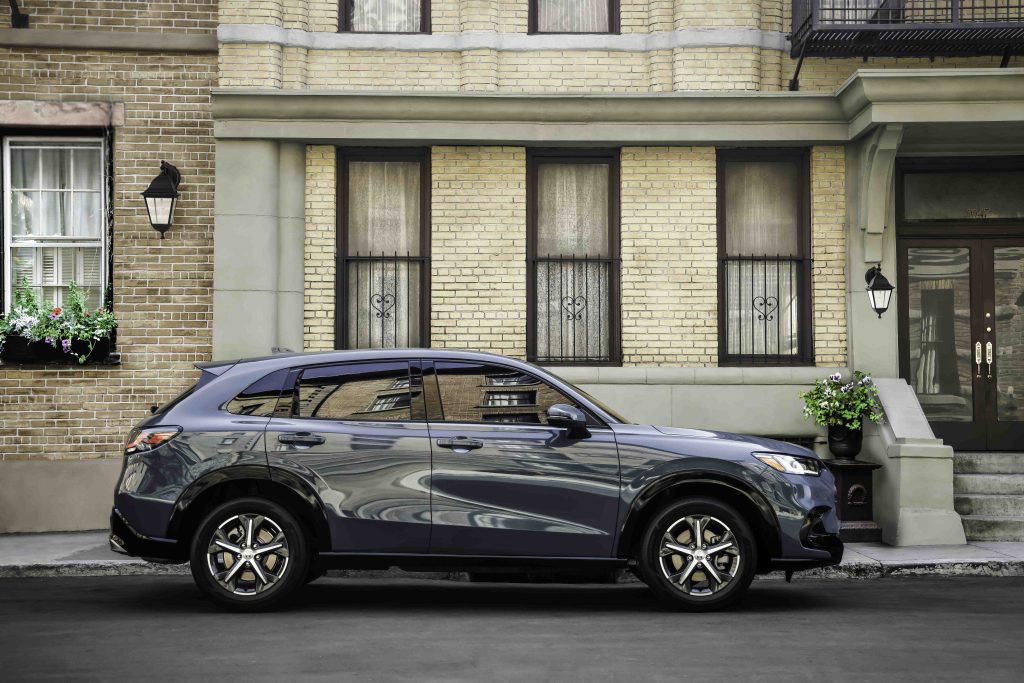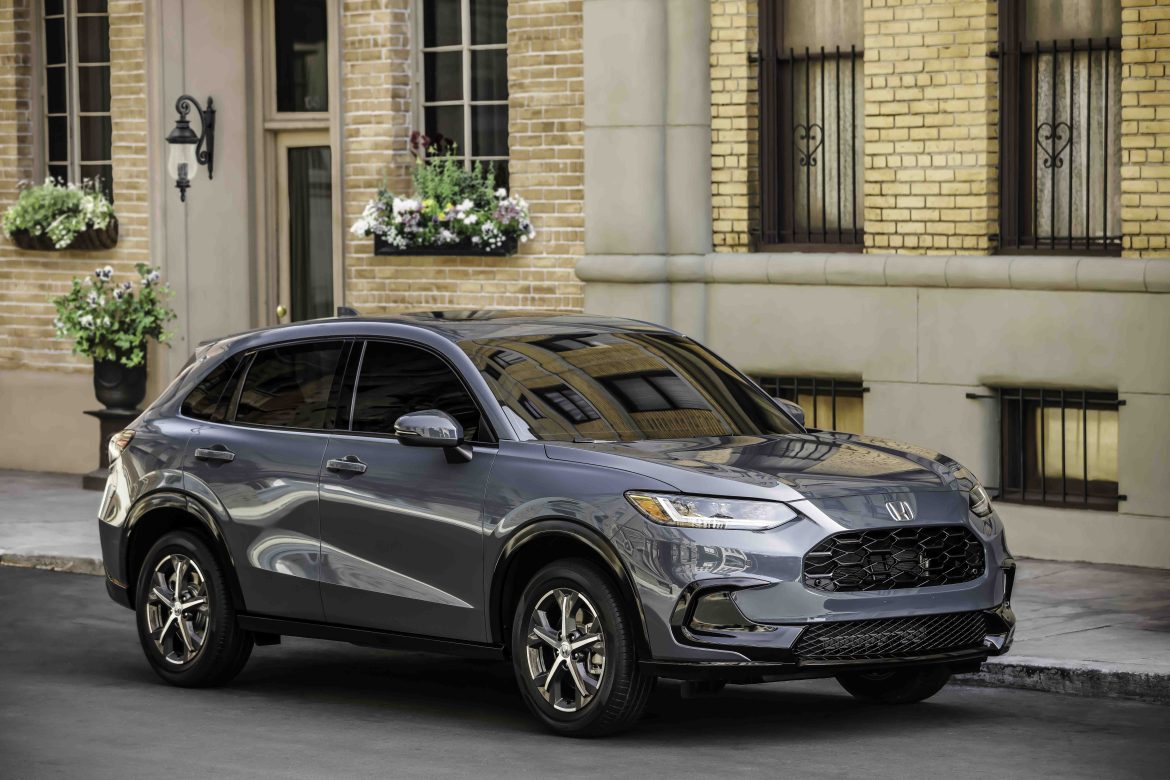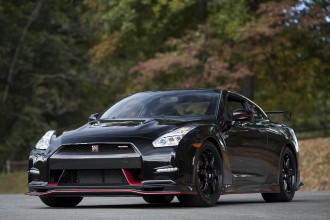In an effort to stay competitive with rivals, Honda went with a striking new aesthetic in the 2023 Honda HR-V AWD EX-L, its small SUV. HR-V exterior is more sleek, the cabin more high-tech. Notably, the CUV is sleeker and has larger proportions compared to the outgoing model – by 10 inches in length and three inches in width.
Honda also ditched the Fit chassis for the HR-V and built it over the Civic sedan powertrain. With this, the HR-V adds more horsepower and a more fierce posture. Other noticeable changes include wider LED lights on front and back, dazzling inlets and chiseled grilles on the front. The update leaves a clean roofline and the small SUV overall offers enough charms mixed with sportiness to make a great first impression.
Keeping in mind that the HR-V is a budget-friendly small SUV, it’s not fair to expect a high level of luxury. But, the higher-end, all-wheel drive EX-L trim delivers in that aspect, as the quilted leather, body-curving seats and leather-wrapped steering wheel, along with a moonroof and dual-zone climate control provide comforts typically found at higher price points. On the tech front, the HR-V doesn’t disappoint either, as remote start, wireless phone charging, Apple CarPlay and Android Auto are included.

One big difference from the outgoing HR-V model to the newest is the second-row magic seat, which is eliminated in the 2023 model. It was one of the more appealing features in the previous model. The seats folded 60/40 or flat, with seat bottoms flipped up creating room to accommodate transporting larger and longer objects. Owners could remove the front passenger headrest and fold the seat to fit the lengthier items. The new HR-V may have larger proportions but ironically it actually offers four cubic feet less cargo space.
As far as performance and day-to-day is concerned, Honda delivers. The HR-V is sedate, comfortable, and has respectable fuel economy – although a little lower than the predecessor, we were able to match the EPA’s 30-mpg highway rating in mixed driving. Nonetheless, it has the look and the feel of a potent, state-of-the-art crossover SUV. The ride is smooth and we didn’t feel much roll or pitch that is a common occurrence in other small SUVs in HR-V’s segment.
If you’re looking to up the ante a bit, the Sport driving mode is available. But we found it to be rather unnecessary, as even with the throttle pushed to the max, the HR-V is on the sluggish side. This is common for small SUVs, and perhaps slightly magnified in the HR-V.

The cause of this is Honda’s Civic-borrowed powertrain. The naturally aspirated 2.0-liter inline-4 engine is good for 158 hp and 138 pound-feet of torque, mated to a continuously variable transmission (CVT). While this may suffice in the Civic sedan, it tacks on just 17 hp and 11 pound-feet to the new HR-V over the previous model. In a practical sense, it means the HR-V will struggle to accelerate up a slope and even when switched to the S mode with higher revs, it doesn’t fare much better.
The setbacks are minimal trade-offs to the new styling and cabin features, but anyone would be hard-pressed to elevate the HR-V into the conversation as a top-tier candidate within its segment.
Edited by Slav Kandyba
Photo Credit: Honda


